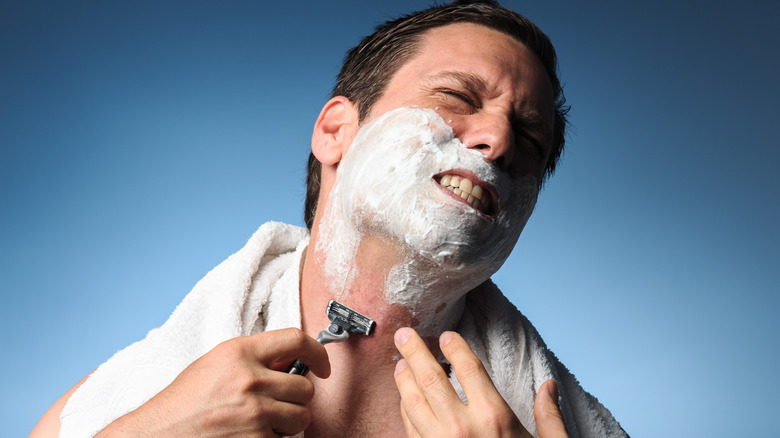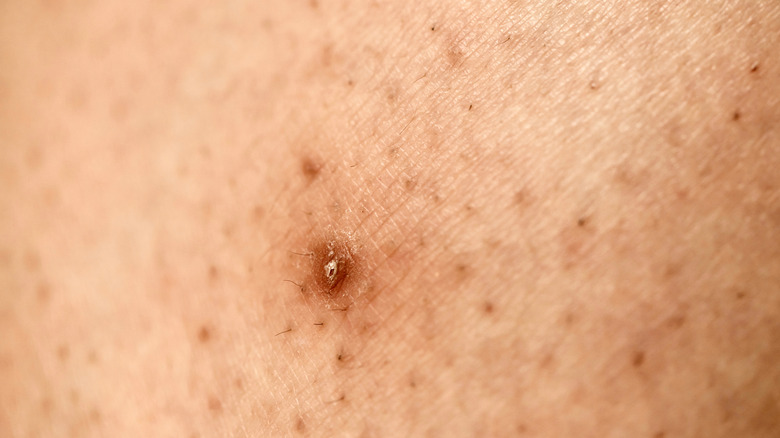How To Treat An Ingrown Hair Cyst
If you shave regularly, chances are you have had your fair share of ingrown hair cysts. A cyst is a bump that rises from deep within the skin's surface, per Healthline. They aren't a pretty sight, and neither are they comfortable. According to Healthline, ingrown hairs can cause a cyst — a small pimple-like bump with hair on its surface. The bump can become much larger and painful to touch if left untreated, says Healthline.
According to MedicalNewsToday, ingrown hairs usually emerge when hair gets stuck under the skin before it has a chance to leave the follicle. Trapped hair irritates the skin and blocks the pores, trapping various substances inside. The result, according to the source, is an ingrown hair cyst.
Some symptoms of ingrown hairs include pain, discoloration (often red, purple, or brown), skin irritation, and small bumps in the middle of the face and neck, explains the Cleveland Clinic.
How to treat an ingrown hair cyst
According to MedicalNewsToday, cysts caused by ingrown hair usually go away on their own. The source advises keeping the cyst and surrounding areas clean to reduce the chance of infection. They also suggest trying to avoid shaving the surrounding areas of the cyst to prevent further irritation. MedicalNewsToday further advises applying tea tree oil, which has great antiseptic properties. According to the Cleveland Clinic, to properly treat an ingrown hair, it's important to reduce how often you shave. Also, apply a warm compress to the affected area for up to 15 minutes. This will open up your pores, making it easier for all the ingrown hairs to be released, says the clinic.
If your symptoms don't improve after at-home treatments, your doctor might prescribe some medications to decrease inflammation and prevent infection. According to Healthline, retinoids are sometimes prescribed to help ease swelling and reduce the size of the bump. Antibiotics can be rubbed onto your skin or taken by the mouth if an infection is present.
How to prevent an ingrown hair cyst
MedicalNewsToday advises against tweezing, waxing, or shaving the skin to prevent an ingrown hair cyst. If you must do any of these, try washing your skin with warm water before shaving. It also helps to utilize proper hair removal techniques, such as applying shaving cream to your skin, shaving in the direction of growth, not shaving on irritated skin, and not using a blunt razor.
WebMD advises avoiding shaving too close to the skin. Also, try to soothe your skin with a cool washcloth after shaving. It might also be a good idea to use other forms of hair removal aside from shaving. Examples include hair-dissolving creams and laser or electric current hair removal, among others, says WebMD. According to Healthline, these alternative hair removal methods might still put you at mild risk of ingrown hair cysts. It might be best to stop waxing and plucking until your ingrown hairs have found a way out by themselves.



